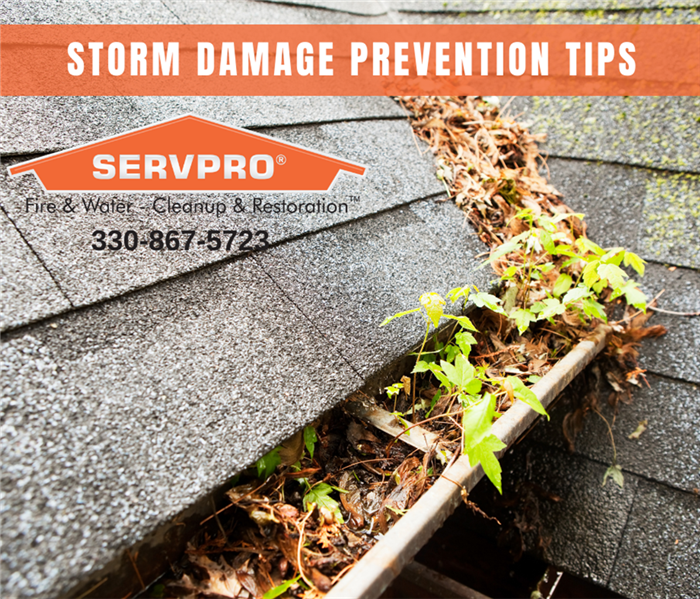Water Damage from a Storm? Here are a Tips to Prevent Water Damage
7/23/2021 (Permalink)
 Clogged gutters can cause water damage to your basement from severe rainstorm. Call us if you need water cleanup and restoration at 330-867-5723.
Clogged gutters can cause water damage to your basement from severe rainstorm. Call us if you need water cleanup and restoration at 330-867-5723.
Wake up to water in your basement from a storm? The first thing to check for is surface water draining down next to the foundation walls. Water coming in at one location or only at the exterior foundation wall indicates surface water problems.
Here are some things to look for once you get outside.
- Overflowing gutters: Keeping gutters clean of debris should be cleaned out a few times a year. Check your downspouts to make sure the water has proper drainage away from your home. Even if the water is not getting into the basement, it could be eroding soil from under the house footings, which can lead to cracking of walls and ceilings.
- Downspout distance: Downspouts should extend 10 feet from your home. While many homeowners do not like downspouts extending out this far, 10 feet is the minimum distance needed to discharge water coming off your roof far enough away from the house.
- Pavement slope: Sometimes paving settles over time and water flow can change direction toward the house. If this is the case, the paving should be removed and replaced so it slopes away from the home.
- Sealant: Sealant around pavement that borders the house sometimes cracks over time due to age or incorrect installation. If the sealant is cracked, it must be removed and replaced with new sealant.
- Landscape slope: Have your yard around your home slope away from the foundation.
- Look for any depressions in the ground next to the foundation walls. If any are found, fill in with dirt so the water drains away from the house. Use a clay-type soil that sheds water instead of sandy soil that allows water to soak into the ground. Make sure that at least eight inches is kept between the top of the earth and any wood or stucco on the house.
- If there are large hills nearby sloping toward your home, and you think they may be causing the problem, a civil engineer may be required to analyze the situation and determine the appropriate solutions.
- Irrigation: Avoid placing lawn irrigation next to the house. If this can’t be avoided, instruct the installer to limit the amount of water dispersed next to the house. Make sure the irrigation system includes a working rain gauge, so the system does not turn on when there has already been plenty of rain for the plants and lawn.
Handling water damage from a storm can be a devastating ordeal for a homeowner. If you have experienced an unexpected form of disaster from a storm such as water damage to your basement or storm damage to your roof, then please feel free to contact one of the experts at SERVPRO of West Akron today. Water cleanup may seem like a near impossible task for some circumstances, however, it does not necessarily have to be if you make the decision of contacting the right restoration company.
Water Damage Repair and Restoration
- 24-Hour Emergency Service
- Faster to Any Size Disaster
- Highly Trained Restoration Technicians
- A Trusted Leader in the Restoration Industry
- Locally Owned and Operated
- Advanced Restoration and Cleaning Equipment
Have Questions? Call Us Today – (330) 867-5723





 24/7 Emergency Service
24/7 Emergency Service